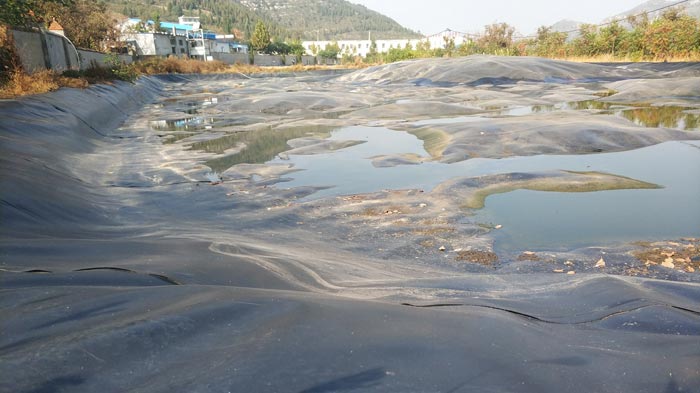Geomembrane laying process flow
The composite geomembrane anti-seepage of Zhoutou Reservoir's dam adopts the section cyclic operation of excavation, paving, ramming and protection.
Base surface cleaning
The base surface must be cleaned according to the design requirements. This is the key to ensure the anti-seepage effect, especially the sharp stones, tree roots and other debris must be thoroughly removed. The base surface must not have local unevenness. The cleaned base surface must Tamper tightly with a rammer or ramming plate to make it compact and flat.
Composite laying
When laying the film, it must be laid from top to bottom. The film and the film and between the film and the base surface should be flattened and tightly attached, but the film should not be stretched too tightly. Generally, it should be slightly loosened, but no air bubbles should be left at the bottom of the film. Because the geomembrane is relatively thin and light, it is easy to be blown by the wind after it is laid and before the protective layer is laid. Therefore, the area of the film should not be large at one time. It is best to cover the protective layer with soil material while laying the film.
According to the information provided by the manufacturer, the composite geomembrane has a width of 1.0~1.9m. This project uses a width of 1.9m to reduce the joint material. The joints can be hot-bonded, glued, lapped, etc. The design of this project adopts glue, and the joint width is 50mm.
If a puncture or tear in the geomembrane is found, it must be patched with geomembrane glue three times the damaged area.
